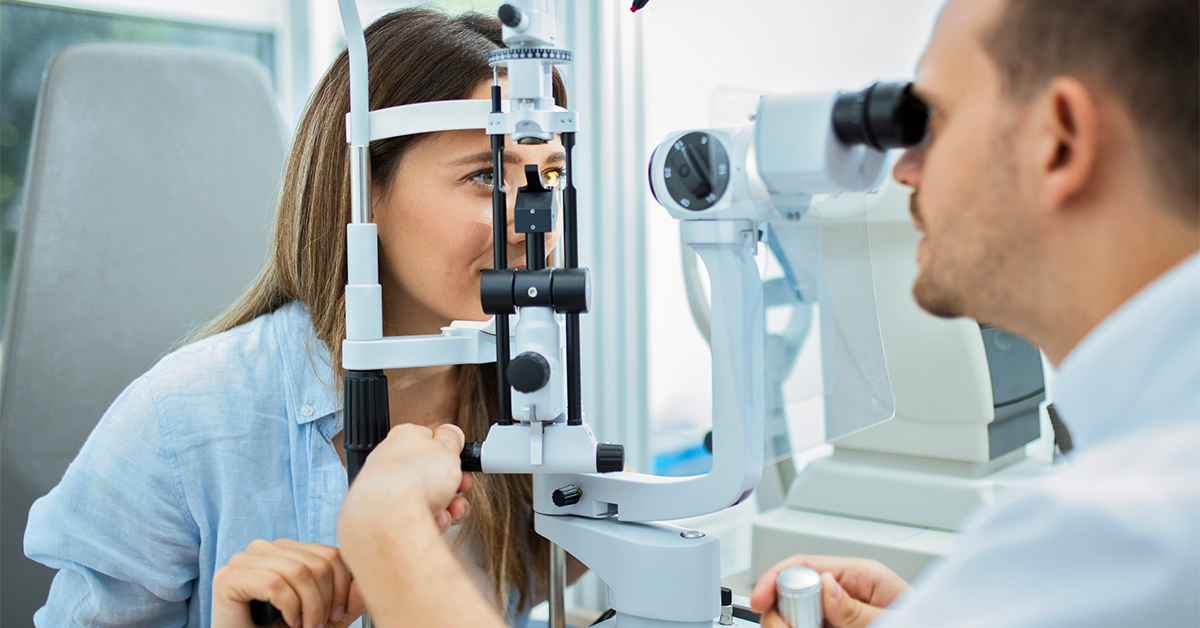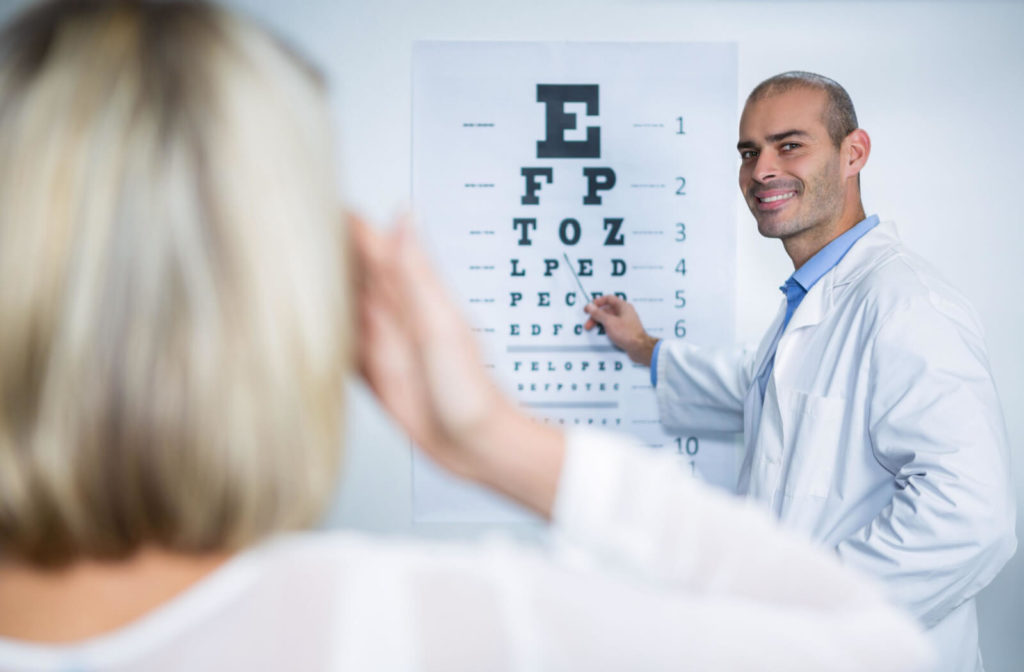Why Selecting an Eye Doctor Optometrist is Essential for Your Eyes
Why Selecting an Eye Doctor Optometrist is Essential for Your Eyes
Blog Article
Discovering the most recent Technical Advancements in Optometry and What They Mean for Eye Doctors
From the precision of Optical Comprehensibility Tomography to the nuanced insights provided by AI-driven diagnostic devices, these innovations are establishing brand-new criteria in client analysis and treatment. As these developments permeate the technique, eye doctors are faced with the challenge of embracing these tools to improve client end results.
Technologies in Diagnostic Equipment
Progressing the area of optometry, technologies in diagnostic tools have revolutionized the way eye care specialists examine and detect eye problems and visual problems. The previous years has experienced substantial technological advancements, making it possible for more exact and comprehensive evaluations.
One more key innovation is the intro of advanced corneal topography systems, which map the surface area curvature of the cornea with accuracy. These tools are specifically advantageous for suitable get in touch with lenses and detecting corneal problems. Furthermore, digital retinal imaging has actually transformed conventional ophthalmoscopy, providing detailed, panoramic sights of the retina that facilitate thorough visual evaluations.
The advancement of wavefront aberrometry has also been essential, making it possible for the evaluation of refractive mistakes with unparalleled accuracy (Eye Doctor). This modern technology helps in customizing restorative lenses and boosting surgical results for refractive surgeries. Collectively, these analysis improvements encourage eye doctors to supply premium patient care, ensuring early treatment and customized treatment strategies, ultimately improving aesthetic wellness end results
AI in Individual Management
Structure on the foundation of sophisticated diagnostic tools, the consolidation of expert system (AI) in person management represents a transformative leap for optometry. AI systems are increasingly utilized to enhance efficiency, accuracy, and personalization in individual care. By assessing vast quantities of data, AI can identify patterns and forecast potential eye problems, enabling eye doctors to tailor interventions better. This ability is crucial in managing chronic eye diseases such as glaucoma and diabetic retinopathy, where early discovery and continuous tracking are key.
Moreover, AI-driven platforms facilitate streamlined client communications and administrative processes. Automated organizing, virtual appointments, and customized follow-up plans not only boost patient fulfillment but also optimize time monitoring for experts. These systems can triage clients based on the urgency of their problems, guaranteeing that those in essential requirement obtain timely interest.
Moreover, AI enhances decision-making by providing eye doctors with evidence-based referrals and therapy paths. By incorporating information from digital health and wellness records, AI devices provide understandings that notify professional decisions, lowering the threat of mistakes and enhancing person outcomes. As AI proceeds to advance, its duty in person administration will likely expand, reshaping the landscape of optometric treatment.
Breakthroughs in Retinal Imaging
In the world of optometry, retinal imaging has actually observed exceptional technical innovations that are boosting analysis capabilities and person treatment. Developments such as Optical Comprehensibility Tomography (OCT) and fundus photography have changed just how eye doctors examine the retina and picture. OCT, specifically, gives high-resolution, cross-sectional images of the retina, allowing for the thorough examination of its layers. This ability is very useful for early detection and monitoring of conditions like glaucoma, diabetic retinopathy, and age-related macular degeneration.
Enhanced imaging methods like OCT angiography are additional refining diagnostic accuracy. This non-invasive method maps blood circulation in the retina, offering critical understandings right into vascular wellness without the need for dye injections. Furthermore, adaptive optics modern technology is being incorporated right into retinal imaging systems to correct eye aberrations, supplying extraordinary image quality. Such innovations help with the recognition of minute retinal adjustments that could signify illness progression.
Moreover, innovations in man-made intelligence are enhancing retinal imaging by allowing computerized analysis of large datasets. These systems assist eye doctors in recognizing patterns indicative of pathology, consequently boosting analysis precision and performance. Jointly, these technologies are transforming retinal imaging into see this here a cornerstone of contemporary eye treatment, boosting results and increasing restorative possibilities.
Teleoptometry's Growing Duty
Teleoptometry is increasingly ending up being an essential element of eye treatment, driven by advancements in electronic communication and analysis tools. This is particularly helpful in underserved and rural areas where accessibility to specialized eye care is commonly limited.
The integration of artificial knowledge (AI) more boosts teleoptometry, making it possible for the analysis of visual data and helping in the detection of eye conditions such as glaucoma and diabetic person retinopathy. AI-powered algorithms can swiftly translate intricate imaging information, providing eye doctors with important insights that boost clinical decision-making.
Additionally, teleoptometry sustains continuity of care via smooth assimilation with digital health documents (EHRs), allowing optometrists to preserve detailed patient backgrounds. This makes certain that people get individualized and constant care also when speaking with different professionals.
Regardless of these benefits, difficulties continue to be, consisting of making sure data protection and taking care of patient expectations. Nevertheless, teleoptometry stands for a substantial stride towards more obtainable, effective, and patient-centered eye treatment. As modern technology progresses, its function is positioned to broaden better.

Future Patterns in Eye Treatment
A myriad of cutting-edge trends is readied to improve the future of eye care, driven by technical innovations and the progressing requirements of individuals. One significant fad is the integration of expert system (AI) in diagnostics, which guarantees to boost the precision and effectiveness of eye evaluations. AI formulas can analyze large amounts of data from retinal images, possibly discovering conditions like diabetic retinopathy and glaucoma earlier than standard techniques.
Moreover, tailored medicine is obtaining grip in optometry, with genetic screening informing personalized therapy strategies. This method aims to enhance patient end results by tailoring treatments to private genetic accounts. Wearable technology, such as smart call lenses, is likewise imminent, using real-time surveillance of intraocular pressure or sugar degrees, therefore providing continuous insights into eye and systemic wellness.
The fostering of increased view publisher site fact (AR) and virtual truth (VR) in training and individual education and learning is an additional emerging trend. These innovations provide immersive experiences that can enhance understanding and abilities both for clients and eye doctors. As these fads advance, eye doctors have to stay abreast of technical innovations to offer sophisticated treatment, making sure better client end results and complete satisfaction in the dynamic landscape of eye treatment.
Conclusion

Jointly, these analysis innovations empower optometrists to deliver remarkable person treatment, guaranteeing early treatment and customized therapy approaches, ultimately boosting aesthetic wellness outcomes.

As these modern technologies continue to progress, optometrists need to adapt and integrate them right into method, eventually enhancing process efficiency and boosting the standard of eye treatment useful reference provided to patients.
Report this page